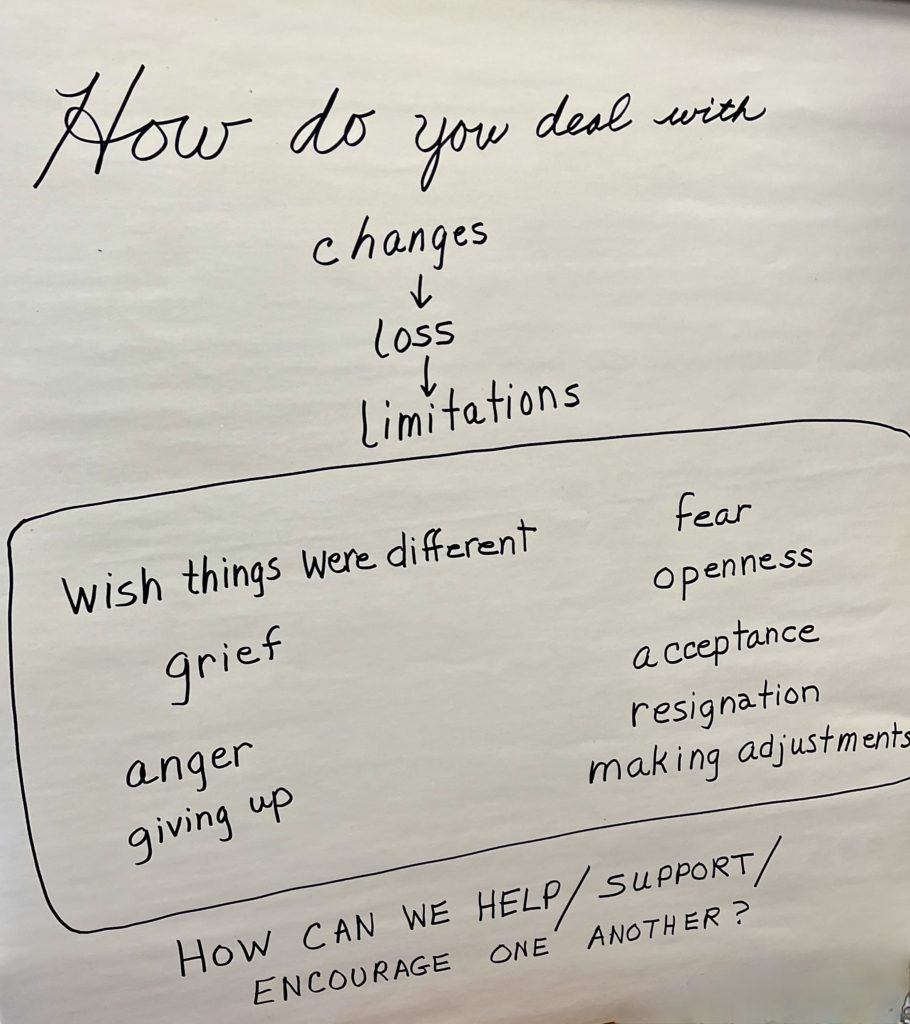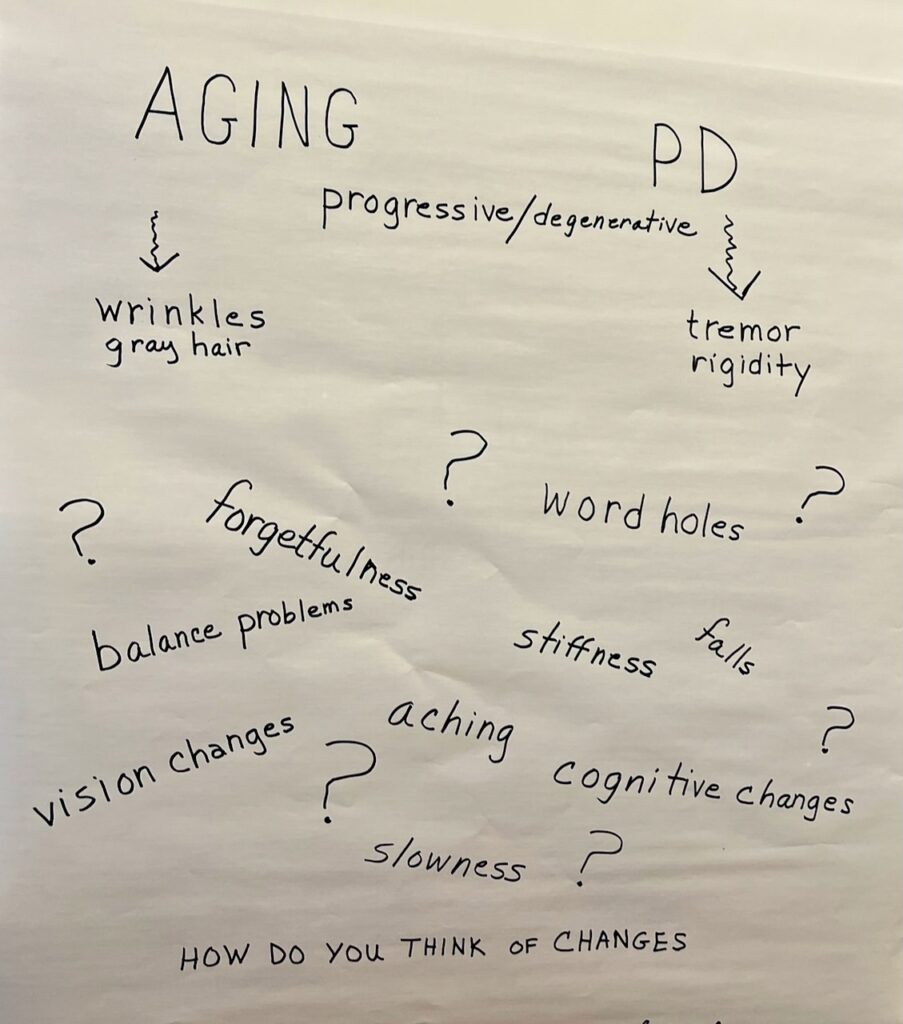At our March 1 Just-Us Share Time meeting, we talked about Aging with Parkinson’s. There were a dozen or so of us who were able to attend. Our dates of diagnosis ranged from 2006 to 2013 and our ages from mid-fifties to mid-eighties or so.


We all agreed on the progressive nature of Parkinson’s disease and aging, and that some signs are more easily attributable to one over the other. Gray hair and wrinkled skin come with aging; tremor, rigidity, and small handwriting are some of the symptoms of Parkinson’s. But what about forgetfulness, word holes where you blank out on a name or a place or some other word you are looking for while talking, and other cognitive changes? What about stiffness, falls, vision problems, and balance issues? Under which heading do they fall?
One member said she blames all of the above and everything else, such as digestive disturbances, dizziness, body aches and pains, loss of energy and fatigue, on Parkinson’s. Another said it’s a lot different when you tell yourself something is caused by Parkinson’s than when someone else tells you. She doesn’t like when her sister says, “It’s Parkinson’s,” every time she mentions a change or new symptom she’s noticed.
One member talked about eye troubles that have changed her depth and color perceptions, as well as muscle weakness that affects eye convergence, making reading and using a computer difficult. She didn’t think her eye troubles were caused by Parkinson’s but they certainly affect it. Another shared she has problems coming down the stairs from vision issues she’s experienced since having cataract surgery. She can’t rely on her eyes to tell her which step is the last one. She counts instead. She is also looking into prism glasses to see if they will help.
Other shared strategies that can help with going up and down the stairs in our homes include (1) having another banister installed on the opposite wall of the existing one, so that there are two to hold onto; (2) wearing an ankle brace to hold an unsteady foot steady and keep you from falling; (3) using a tote bag to carry things up and down the stairs.
In addition to being proactive and seeking solutions for obstacles we encounter in our homes and with our bodies, many of us have found successful strategies to address our mental well-being. One member shared how meditation has helped her cope with the loud engine noise of planes taking off from the airport close to her new house, which led to a discussion about sleep issues and anxiety, and how meditation might be helpful. There are quite a number of meditators among us! Resources that some of our members use are listed and linked below.
General and Guided Meditation Resources and Other Resources below. Some of the meditation sites also offer apps you can download and/or are available through Spotify, iTunes, Android, Pandora, YouTube, etc.
Mindfulness Medium is a good source for spiritual readings and guided meditations.
Guided Meditations by Tara Brach, founder of the nearby Insight Meditation Community of Washington (IMCW).
Free Meditations available online or via Insight Timer app.
John Kabat-Zinn, PhD, began the original Stress Reduction Clinic at UMass Memorial Medication Center that became the basis for the MBSR (Mindfulness-Based Stress Reduction) program. A sample Mindfulness of the Breath meditation on YouTube. IMCW offers MBSR classes via Zoom. To learn more about MBSR, see Kabat-Zinn’s book, Full Catastrophe Living: Using the Wisdom of Your Body and Mind to Face Stress, Pain, and Illness.
Setting the Stage for Insight Meditation With Parkinson’s Disease: one person with Parkinson’s experience with meditation. A columnist for Parkinson’s News Today, Dr. C has also written Meditation Practice Helps Me Self-Manage Parkinson’s Disease and Old Age or Parkinson’s? It Can Be Tough to Sort Out (great topic!)
Registration for the Pelvic Floor Strong class has closed but the Q&A link lists additional offers and services by Insightful Body Moves.